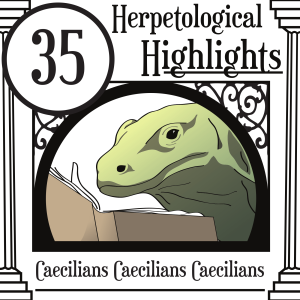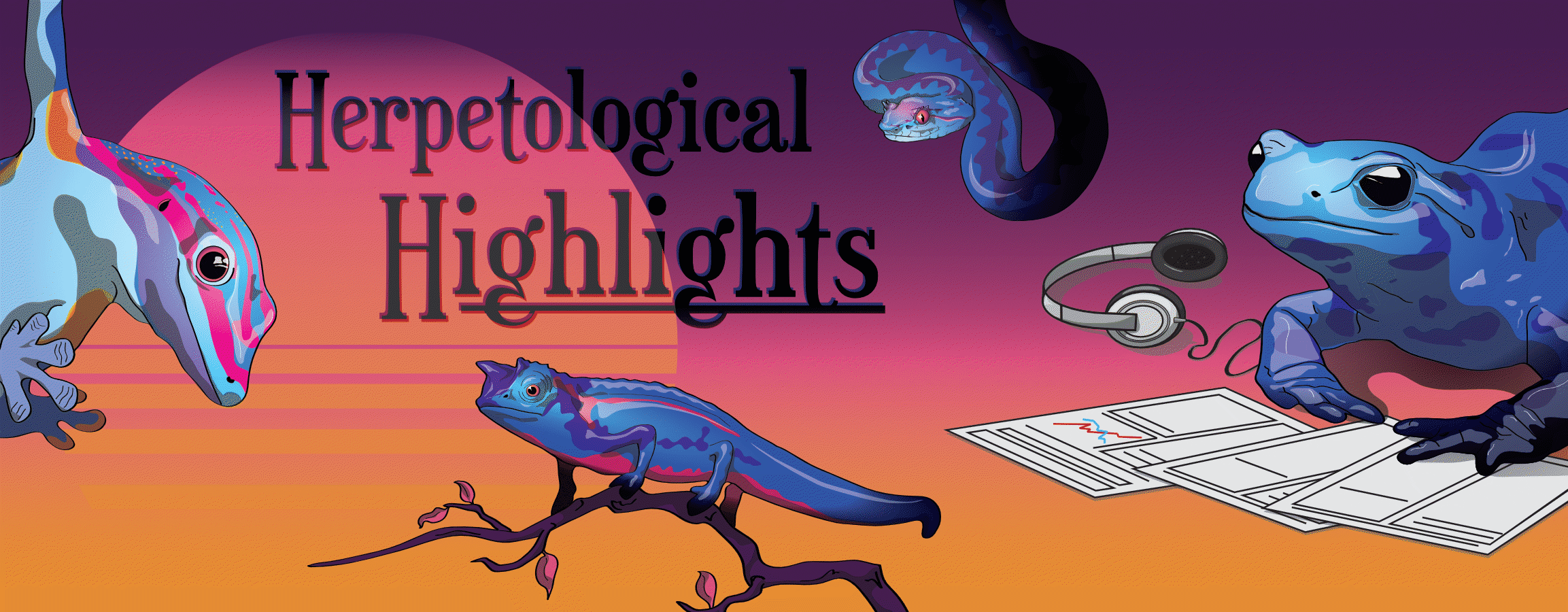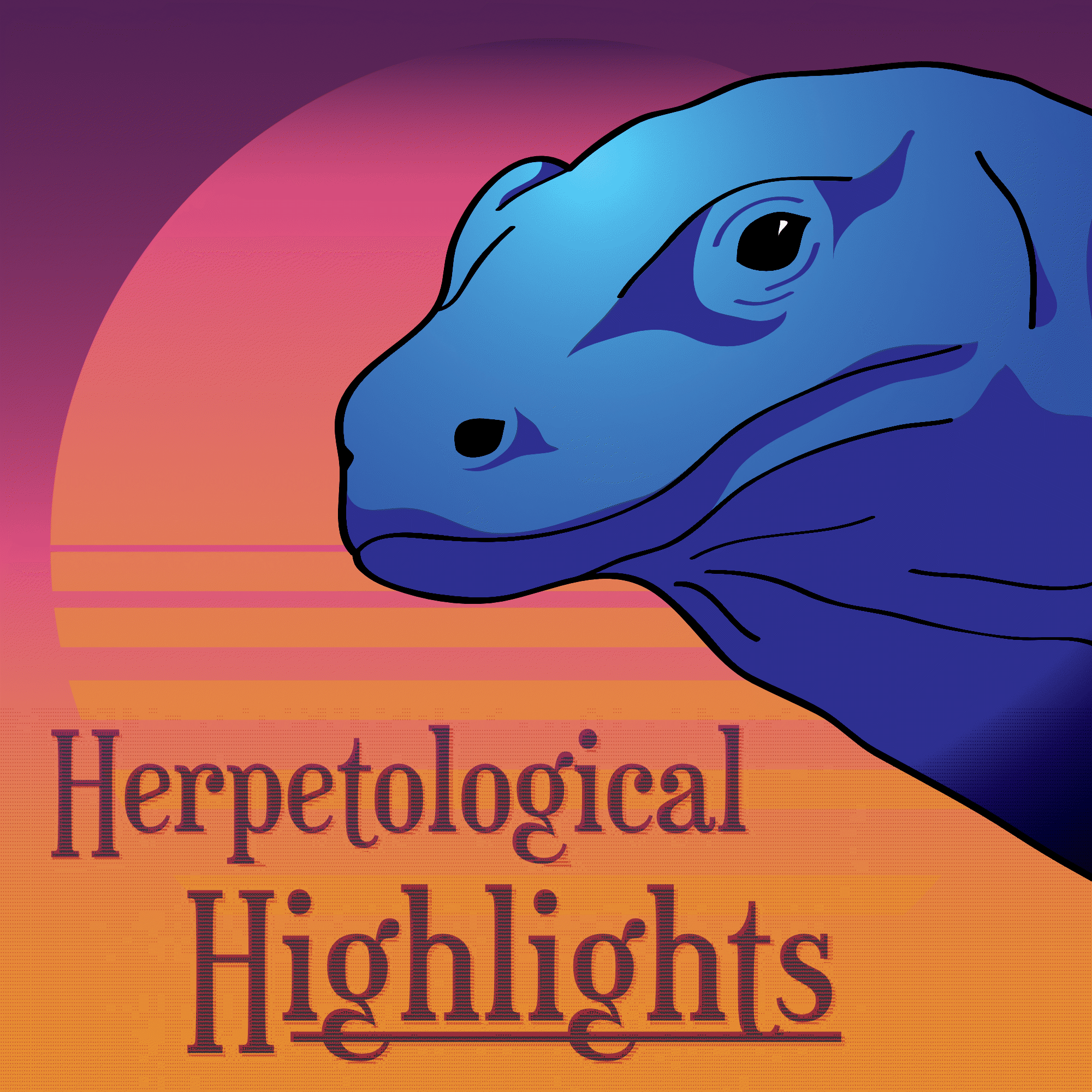Episodes

Tuesday Sep 18, 2018
035 Caecilians Caecilians Caecilians
Tuesday Sep 18, 2018
Tuesday Sep 18, 2018
This fortnight we are delving into the peculiar world of caecilians. Fossorial amphibians that seldom show their faces on the surface. We chat about caecilians' strange adaptations and how a ten-year study has shed some light on their reproductive habits. The Species of the Bi-week is a suitably elongated and slimy critter. FULL REFERENCE LIST AVAILABLE AT: herphighlights.podbean.com

Main Paper References:
Jared, C., Mailho-Fontana, P. L., Jared, S. G. S., Kupfer, A., Delabie, J. H. C., Wilkinson, M., & Antoniazzi, M. M. (2018). Life history and reproduction of the neotropical caecilian Siphonops annulatus (Amphibia, Gymnophiona, Siphonopidae), with special emphasis on parental care. Acta Zoologica, (March), 1–11. https://doi.org/10.1111/azo.12254
Jared, C., Mailho-Fontana, P. L., Marques-Porto, R., Sciani, J. M., Pimenta, D. C., Brodie, E. D., & Antoniazzi, M. M. (2018). Skin gland concentrations adapted to different evolutionary pressures in the head and posterior regions of the caecilian Siphonops annulatus. Scientific Reports, 8(1), 1–7. https://doi.org/10.1038/s41598-018-22005-5
Species of the Bi-Week:
Maddock, S. T., Wilkinson, M., & Gower, D. J. (2018). A new species of small, long-snouted Hypogeophis Peters, 1880 (Amphibia: Gymnophiona: Indotyphlidae) from the highest elevations of the Seychelles island of Mahé. Zootaxa, 4450(3), 359–375. https://doi.org/10.11646/zootaxa.4450.3.3
Other Mentioned Papers/Studies:
Jared, C. et al. (2005). Head co-ossification, phragmosis and defense in the casque-headed tree frog Corythomantis greeningi. Journal of Zoology, 265.
Sawaya, P. (1940) Sobre o veneno das glândulas cutâneas, a secreção e o coração de Siphonops annulatus. Bot. Fac. Fill. Ci. Let. Univ. São Paulo. Ser. Zool. 4, 207–270
Wilkinson, M., Kupfer, A., Marques-Porto, R., Jeffkins, H., Antoniazzi, M. M., & Jared, C. (2008). One hundred million years of skin feeding? Extended parental care in a Neotropical caecilian (Amphibia: Gymnophiona). Biology Letters, 4(4), 358–361. https://doi.org/10.1098/rsbl.2008.0217
Wilson, N. J., Stokes, A. N., Hopkins, G. R., Brodie, Jr., E. D., & Williams, C. R. (2014). Functional and physiological resistance of crayfish to amphibian toxins: tetrodotoxin resistance in the white river crayfish (Procambarus acutus). Canadian Journal of Zoology, 92(11), 939–945. https://doi.org/10.1139/cjz-2014-0128
Other Links/Mentions:
BBC Life in Cold Blood - https://www.youtube.com/watch?v=UCF4qmxdkkM
Video of caecilian babies eating the skin of their mother: https://www.youtube.com/watch?v=6K6szXrBHwM
Music:
Intro/outro – Treehouse by Ed Nelson
Other Music – The Passion HiFi, www.thepassionhifi.com

Tuesday Sep 04, 2018
034 Hybrid Pythons
Tuesday Sep 04, 2018
Tuesday Sep 04, 2018
The News Niche has come again. This episode we talk about invasive python genetics (just what are they?) and new conservation tools, with a Species of the Bi-Week that features not one but two new cobras. FULL REFERENCE LIST AVAILABLE AT: herphighlights.podbean.com

Main Paper References:
Gumbs, R., Gray, C. L., Wearn, O. R., & Owen, N. R. (2018). Tetrapods on the EDGE: Overcoming data limitations to identify phylogenetic conservation priorities. PloS one, 13(4), e0194680.
Hunter, M. E., Johnson, N. A., Smith, B. J., Davis, M. C., Butterfield, J. S., Snow, R. W., & Hart, K. M. (2018). Cytonuclear discordance in the Florida Everglades invasive Burmese python (Python bivittatus) population reveals possible hybridization with the Indian python (P. molurus). Ecology and Evolution.
Species of the Bi-Week: WÜSTER, W., Chirio, L., Trape, J. F., Ineich, I., Jackson, K., Greenbaum, E., ... & Hall, C. (2018). Integration of nuclear and mitochondrial gene sequences and morphology reveals unexpected diversity in the forest cobra (Naja melanoleuca) species complex in Central and West Africa (Serpentes: Elapidae). Zootaxa, 4455(1), 68-98.
Other mentioned papers:
Hart, K. M., Cherkiss, M. S., Smith, B. J., Mazzotti, F. J., Fujisaki, I., Snow, R. W., & Dorcas, M. E. (2015). Home range, habitat use, and movement patterns of non-native Burmese pythons in Everglades National Park, Florida, USA. Animal Biotelemetry, 3(1), 8.
Hunter, M. E., Oyler-McCance, S. J., Dorazio, R. M., Fike, J. A., Smith, B. J., Hunter, C. T., ... & Hart, K. M. (2015). Environmental DNA (eDNA) sampling improves occurrence and detection estimates of invasive Burmese pythons. PloS one, 10(4), e0121655.
Hyslop, N. L., Meyers, J. M., Cooper, R. J., & Stevenson, D. J. (2014). Effects of body size and sex of Drymarchon couperi (eastern indigo snake) on habitat use, movements, and home range size in Georgia. The Journal of Wildlife Management, 78(1), 101-111.
Lynch, V. J., & Wagner, G. P. (2010). Did egg‐laying boas break Dollo's law? Phylogenetic evidence for reversal to oviparity in sand boas (Eryx: Boidae). Evolution: International Journal of Organic Evolution, 64(1), 207-216.
Pyron, R. A., & Burbrink, F. T. (2014). Early origin of viviparity and multiple reversions to oviparity in squamate reptiles. Ecology letters, 17(1), 13-21.
Shine, R. (2015). The evolution of oviparity in squamate reptiles: an adaptationist perspective. Journal of Experimental Zoology Part B: Molecular and Developmental Evolution, 324(6), 487-492.
Wang, Y., & Evans, S. E. (2011). A gravid lizard from the Cretaceous of China and the early history of squamate viviparity. Naturwissenschaften, 98(9), 739.
Zhu, F., Liu, Q., Che, J., Zhang, L., Chen, X., Yan, F., ... & Guo, P. (2016). Molecular phylogeography of white‐lipped tree viper (Trimeresurus; Viperidae). Zoologica Scripta, 45(3), 252-262.
Other links:
Captive and field Herpetology Issue 2: http://captiveandfieldherpetology.com/volume-2-issue-1-2018/
A Naturalist’s Guide to the Dangerous Creatures of Australia: https://www.nhbs.com/a-naturalists-guide-to-the-dangerous-creatures-of-australia-book
Music:
Intro/outro – Treehouse by Ed Nelson
Other Music – The Passion HiFi, www.thepassionhifi.com

